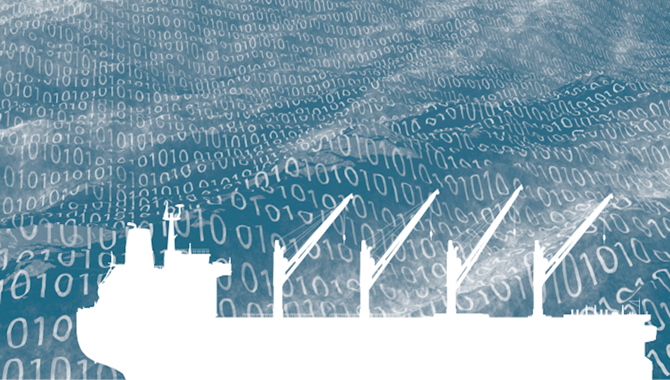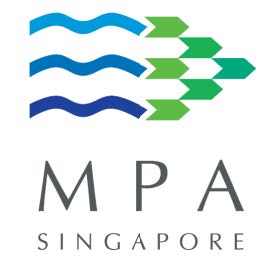
Shipowners and operators who have not already done so, should undertake risk assessments and incorporate measures to deal with cyber risks in their ship’s safety management systems (SMS) and crew awareness training. While the IMO has given shipowners and managers until 1 January 2021 to incorporate cyber risk into ships’ safety management systems, tanker owners and operators that are subject to vetting under OCIMF’s SIRE Programme have been addressing cyber security risks in their policies and procedures since 1 January 2018.
The newly published third edition of the industry cyber risk management guidelines, Guidelines on Cyber Security Onboard Ships, addresses the requirement to incorporate cyber risks in the ship’s safety management system. This was not included in the previous versions of the guidelines. Its inclusion reflects the fact that the industry has a deeper experience with risk assessments of operational technology (OT) – such as navigational systems and engine controls – and provides more guidance for dealing with the cyber risks to the ship arising from parties in the maritime supply chain.
Cyber risks may not be easy to identify
Criminals trying to exploit the maritime industry, the ships and their crew are well organised and continuously evolve in the way they operate. This reflects the constantly evolving nature of cyber risk in general. Approaches to cyber risk management need to be company and ship specific but must be guided by requirements contained in relevant national, international and flag state regulations.
Senior management should embed a culture of cyber risk awareness into all levels and departments on board a ship. The result should be a flexible cyber risk management regime that is in continuous operation and constantly evaluated through effective feedback mechanisms.
The latest cyber security surveys show that the industry is more aware of the issue and has increased cyber risk management training, but there is still room for improvement. This has also been confirmed by the 2018 Crew Connectivity Survey by Futurenautics group, where only 15% of seafarers acknowledge having received cyber security training, and only 33% said the company they last worked for had a policy of regularly changing passwords on board.
At Gard we strive to protect the interests of our Members and clients in the best possible way. Our recommendation is to take a holistic approach to the cyber risks to protect the confidentiality, integrity and accessibility of both IT and OT systems through measures covering processes, technology and most importantly people. The easiest and most common way for cyber criminals to gain access, is through negligent or poorly trained individuals.
Recommendation No.1: Focus on policies, procedures and risk assessments
The latest Guidelines on Cyber Security Onboard Ships anticipates that cyber incidents will result in physical effects and potential safety and/or pollution incidents. Therefore, companies need to assess the risks arising not only from the use of IT equipment but also from OT equipment onboard ships and establish appropriate safeguards against cyber incidents involving either of these.
Company plans and procedures for cyber risk management must be aligned with existing security and safety risk management requirements contained in the ISPS and ISM Codes as included in company policies. Requirements related to training, operations and maintenance of critical cyber systems should also be included in relevant documentation on-board.
The IMO Maritime Safety Committee (MSC) adopted Resolution MSC.428(98) on Maritime Cyber Risk Management in Safety Management Systems in June 2017. The resolution states that an approved safety management system should include cyber risk management in accordance with the objectives and requirements of the ISM Code, no later than the first annual verification of a company’s Document of Compliance after 1 January 2021.
The Document of Compliance holder is ultimately responsible for ensuring the management of cyber risks on board. Where the ship is under third party management, the ship manager is advised to reach an agreement with the shipowner as to who is responsible for this matter. Emphasis should be placed by both parties on the split of responsibilities, alignment of pragmatic expectations, agreement on specific instructions to the manager and possible participation in purchasing decisions as well as budgetary requirements.
Apart from the ISM requirements, such an agreement should take into consideration additional applicable legislation such as the EU General Data Protection Regulation (GDPR) or specific cyber regulations in other coastal states. Managers and owners should consider using these guidelines as a base for an open discussion on how best to implement an efficient cyber risk management regime onboard. Any agreements on responsibility for cyber risk management should be formal and written.
Companies should also evaluate and cover service providers’ physical security and cyber risk management processes in supplier agreements and contracts. Similarly, coordination of the ship’s port calls is a highly complex task being both global and local in nature. It includes updates from agents, coordinating information with all port vendors, port state control, handling ship and crew requirements, and electronic communication between the ship, port and authorities ashore.
Agents’ quality standards are important because like all other businesses, agents are also targeted by cyber criminals. Cyber enabled crime, such as electronic wire fraud and false ship appointments, and cyber threats such as ransomware and hacking, call for mutual cyber strategies and cyber enhanced relationships between owners and agents to mitigate these risks.
Recommendation No.2: Ensure that system design and configuration are safe and fully understood and followed
The problem with procedures is that good intentions can become paper pushing exercises. It is therefore important to ensure that those performing tasks involving cyber security understand that the purpose of the procedures is to prevent unauthorised access and not simply to satisfy the regulators or their immediate superiors.
Unlike other areas of safety and security, where historic evidence is available, cyber risk management is made more challenging due to the lack of facts about incidents and their impact. Until we have such evidence, the scale and frequency of attacks will continue to be unknown.
Experiences from the shipping industry and other business sectors such as financial institutions, public administration and air transport have shown that successful cyber attacks can result in a significant loss of services.
Modern technologies may add vulnerabilities to the ships especially if there are unsecured networks and free access to the internet. Additionally, shoreside and onboard personnel may be unaware that some equipment manufacturers maintain remote access to shipboard equipment and its network system. Unknown, and uncoordinated remote access to an operating ship should be taken into consideration as an important part of the risk assessment.
Gard recommends that companies should fully understand the ship’s IT and OT systems and how these systems connect and integrate with the shore side, including public authorities, marine terminals and stevedores. This requires an understanding of all computer based systems onboard and how safety, operations, and business can be compromised by a cyber incident.
Some IT and OT systems can be accessed remotely and may have a continuous internet connection for remote monitoring, data collection, maintenance, safety and security. These can be “third-party systems”, whereby the contractor monitors and maintains the systems from a remote location and can be both two-way data flow or upload-only.
Systems and work stations with remote control, access or configuration functions could, for example, be:
Below are some common cyber vulnerabilities, which may be found onboard existing ships, and on some newbuild ships:
Recommendation No.3: Provide proper onboard awareness and training
Today, the weakest link when it comes to cyber security is the human factor. It is therefore important that seafarers are given proper training to help them identify and report cyber incidents.
When assessing cyber risks, both external and internal cyber threats should be considered. Onboard personnel have a key role in protecting IT and OT systems but can also be careless, for example by using removable media to transfer data between systems without taking precautions against the transfer of malware. Training and awareness should be tailored to the appropriate seniority of onboard personnel including the master, officers and crew.
Gard regularly publishes Case Studies for safety meetings focusing on the risk assessment process and identification of the chain of errors that led to an incident. One of our Case Studies addresses cyber security in relation to the crew and we encourages masters to use this Case Study as part of the training – for comparison, analysis and discussion among officers and crew onboard their ships.
Gard’s safety awareness campaign on cyber security
Based on our analysis of cases involving cyber security, Gard and DNV GL have produced a loss prevention awareness video and a presentation with some recommendations for how the maritime industry can address the issue. The material is not intended to suggest any industry changes or rule changes, but rather changes in the way people behave and act.
The following link will take you to our cyber security awareness campaign website, which contains the video, a case study and additional loss prevention material addressing cyber security: http://www.gard.no/web/content/cyber-security-awareness-information-package
Source: Gard
Please Contact Us at:
 Baltic Exchange launches new Fuel Equivalence Conve
Baltic Exchange launches new Fuel Equivalence Conve  21 Consecutive Years of QUALSHIP 21 Recognition for
21 Consecutive Years of QUALSHIP 21 Recognition for  MPA and Wärtsilä Renew Partnership to Drive Marit
MPA and Wärtsilä Renew Partnership to Drive Marit  MPA and Dalian Maritime University Renew Partnershi
MPA and Dalian Maritime University Renew Partnershi  PSA INTERNATIONAL, DNV AND PACIFIC INTERNATIONAL LI
PSA INTERNATIONAL, DNV AND PACIFIC INTERNATIONAL LI  INTERCARGO Reaffirms Call for Simplicity as IMO Cli
INTERCARGO Reaffirms Call for Simplicity as IMO Cli